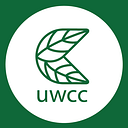How to Practice Sustainability Inclusively: Equipping Sustainability Leaders with the Skills needed to Help Diverse Audiences
By: Simrit Dhillon
In the spirit of International Day of Persons with Disabilities 2021, it is important to examine sustainability and teaching sustainability-related knowledge to those with disabilities. In other words, becoming an inclusive sustainability leader is integral to ensuring diverse audiences (including those with disabilities) are able to better understand what sustainability is and how they can practice it.
General Teaching Strategies for Sustainability Education: Tips for Sustainability Leaders
In general, there are certain considerations when teaching individuals about sustainability, regardless of disability status. Some of these tips include:[1]
- being aware of student overload;
- avoiding doom and gloom;
- using peer engagement and support for enhanced learning.
By keeping word choice, learner emotions, and the amount of content discussed in mind when talking about sustainability, the environment, and/or climate change, it is easier to avoid students feeling as if they have just been overloaded with information.[1] This may also help students receive the appropriate amount of content each time they are learning.
Likewise, too much doom and gloom can make learning much less fun and engaging, so finding that balance between informative but not pessimistic is vital.[1]
Lastly, by either integrating a buddy system, groups, or collaborative projects into the learning curve, students may be encouraged to participate in the learning process more actively.[1] This may foster critical skills, like critical thinking and/or teamwork.[1]
Getting Individuals with Disabilities Thinking about the Environment and Sustainability
One great way to get individuals with disabilities thinking about the environment and sustainability is to get them to connect with the environment. When trying to foster this connection in students, some helpful tips include:[2]
- developing a buddy system that pair individuals with disabilities with individuals without disabilities;
- focusing on the journey and its teachings, instead of the results;
- repeating and reviewing things that you have already taught/explained;
- teaching new material at the beginning of each meeting, when attention and focus is stronger, while review can be done later on;
- focusing on the individual’s strengthens and not their weaknesses;
- encouraging all individuals to participate, and never make disabilities feel like a barrier to learning;
- keeping adaptability in mind when coming up with activities or content to cover, since there might be particular accommodations an individual with a disability requires.
By adopting buddy systems, individuals with disabilities have the chance to get one-on-one help if there is something they do not understand; experience improved safety measures when engaging with new surroundings, due to having a partner; and a sense of inclusivity.[2]
When discussing the significance of focusing on the journey and not the results, this could potentially encourage those with disabilities to appreciate the environment, instead of their own actions. For instance, when engaging in a hike, try to focus more on the observations and the natural scenery, instead of how fast your pace is. This is also a way of avoiding the focus to shift to potential weaknesses.
In terms of repetition, although reviewing content is beneficial for improving one’s grasp of it, involving certain techniques in this practice can prove useful. For example, consider teaching or explaining the same topics in new ways, so repetition and review can occur without boredom.[2]
Finally, adaptability is crucial to taking accommodations and disabilities into account without making them restrictions or barriers. A way to think of this is actively working with someone’s disability and giving them what they need to be on an equal playing field, even if that might mean extra assistance, etc. to get there. Essentially, at the heart of adaptability is equity. Therefore, an example of adaptability could be providing step-by-step instructions as an accommodation, aiming to have easier comprehension amongst the individuals one is working with.
Conclusion
In summation, although disabilities may seem intimidating and exclusionary, they are absolutely not, and can be — not only considered, but catered to — in sustainability and environmental knowledge-seeking. With the potential and positivity of International Day of Persons with Disabilities in mind, when explaining something related to the topics of sustainability and climate change to someone, consider the accessibility of your messaging and how best to convey your thoughts, opinions, and knowledge in an inclusive manner.
Additional Resource
If you are interested in reading more about some potential strategies about working with individuals with learning disabilities, feel free to consult this webpage: http://www.ldonline.org/article/370/
References
- Vanderbilt University. Teaching sustainability [Internet]. n.d. [cited 2021 Dec 2]. Available from: https://cft.vanderbilt.edu/guides-sub-pages/teaching-sustainability/
- Green Teacher. Connecting students with special needs to the environment [Internet]. 2013 Jun 21 [cited 2021 Dec 2]. Available from: https://greenteacher.com/connecting-students-with-special-needs-to-the-environment/
